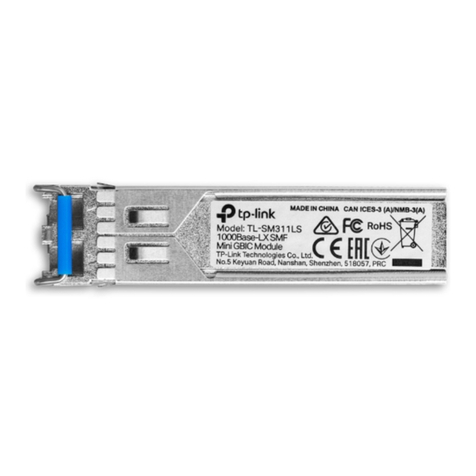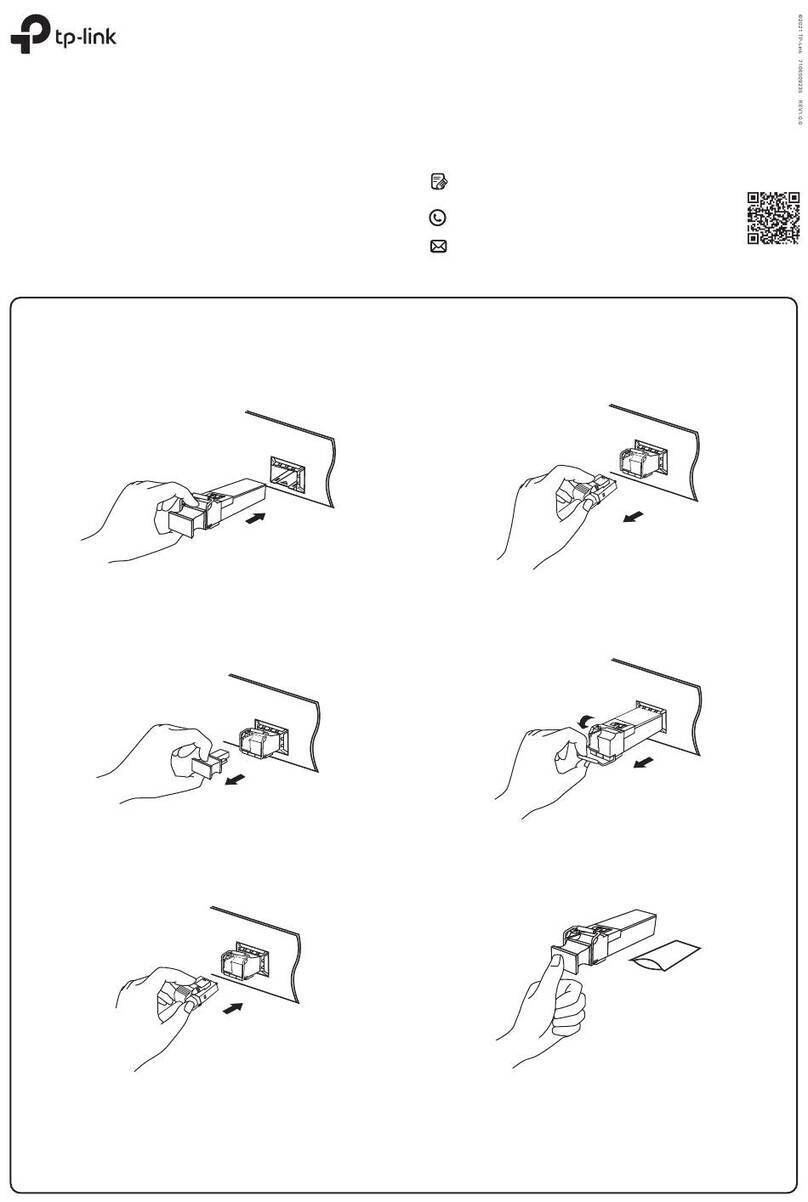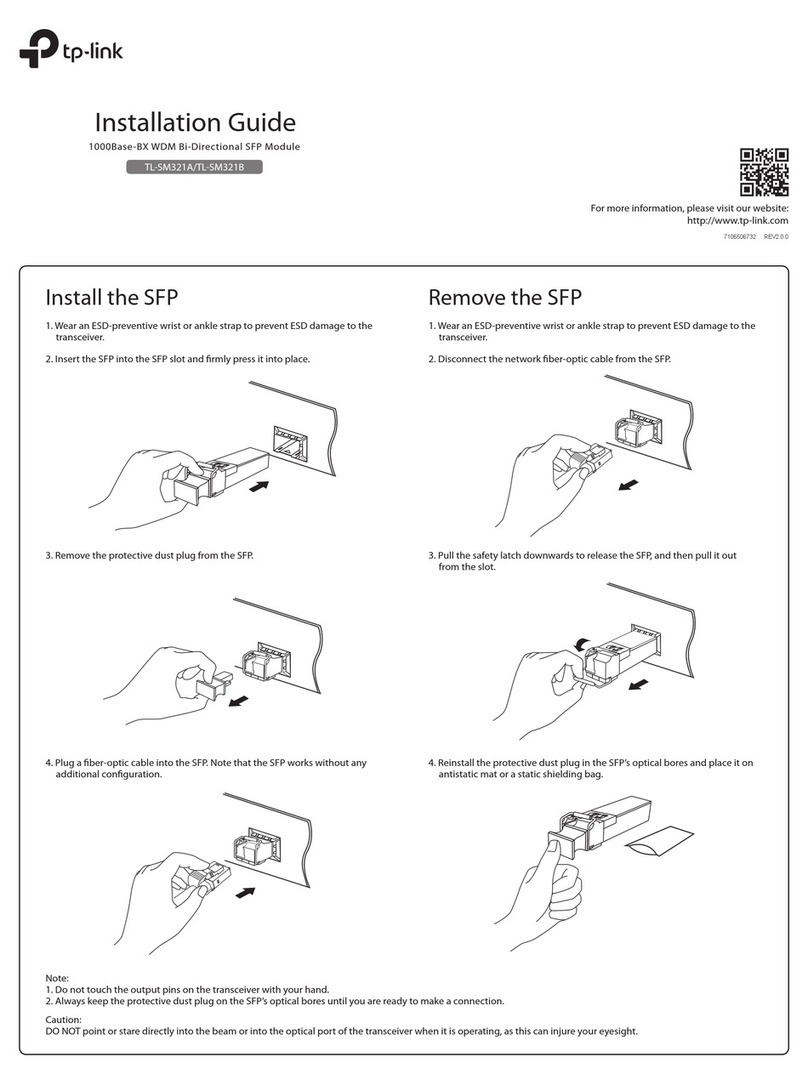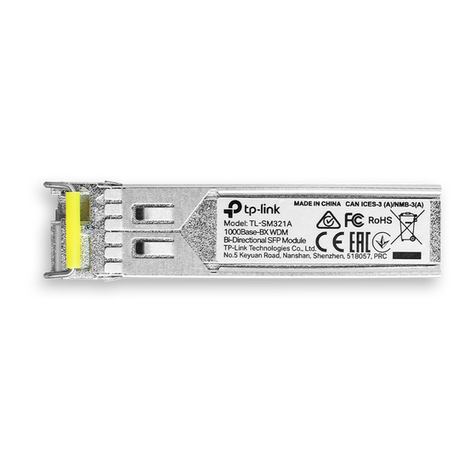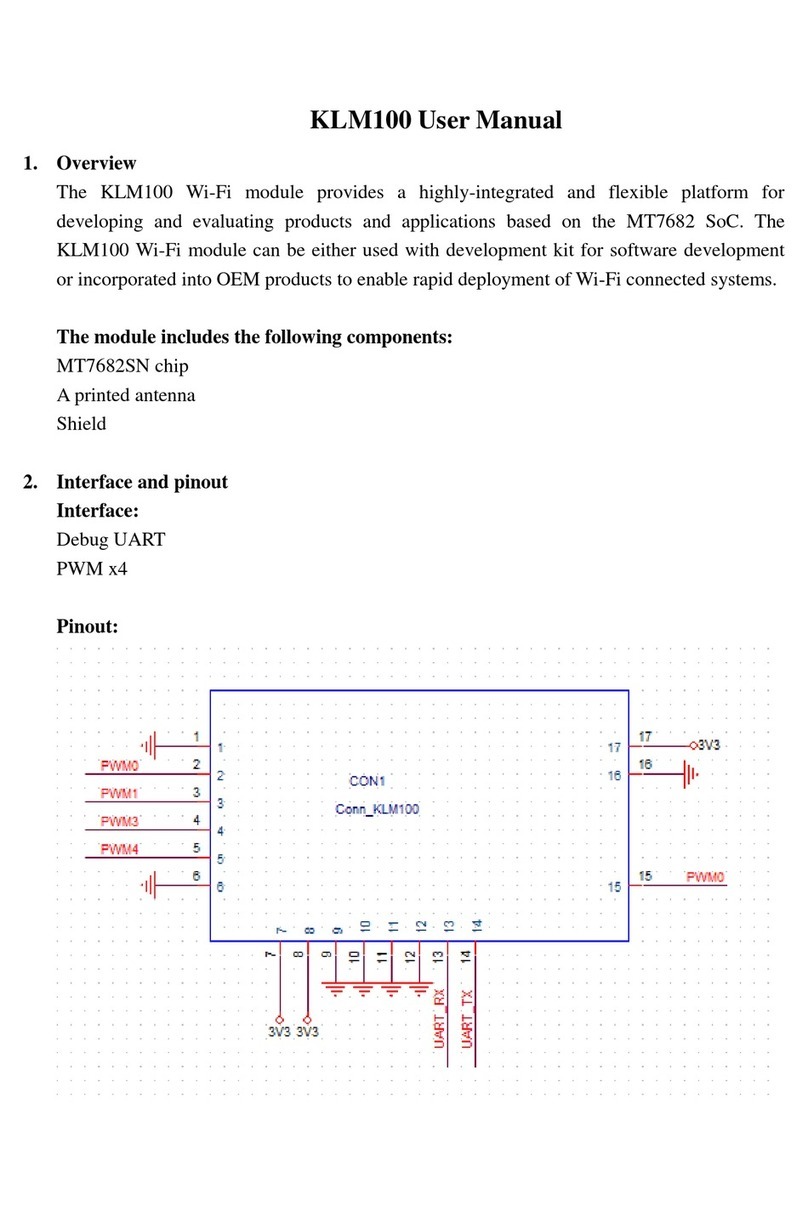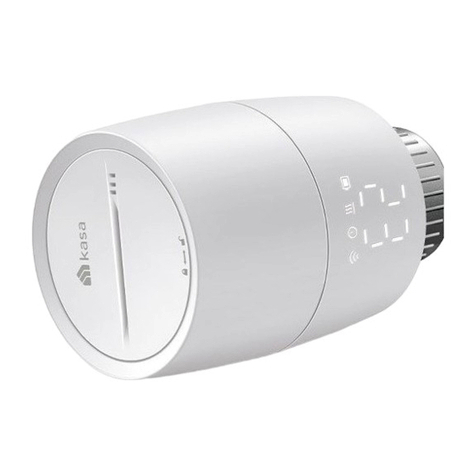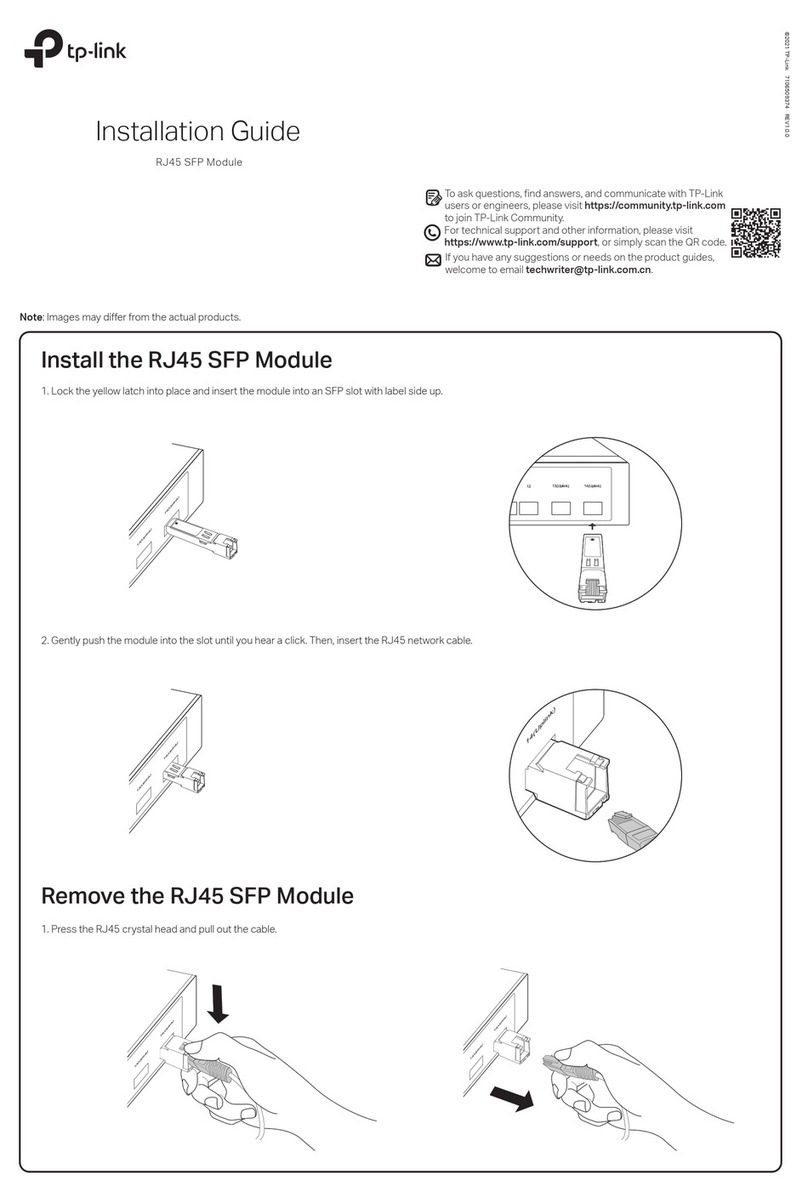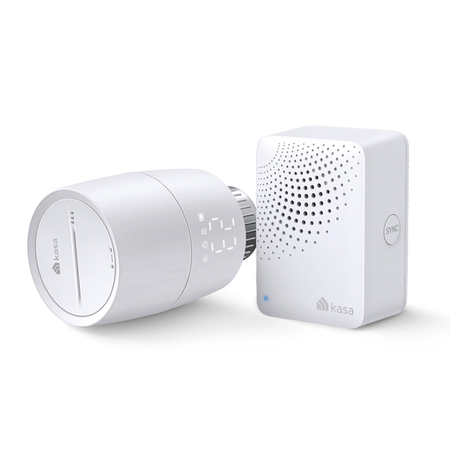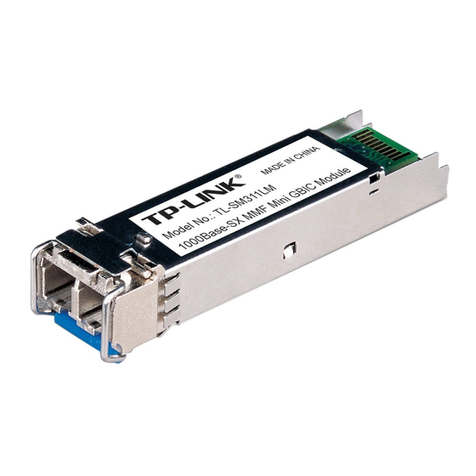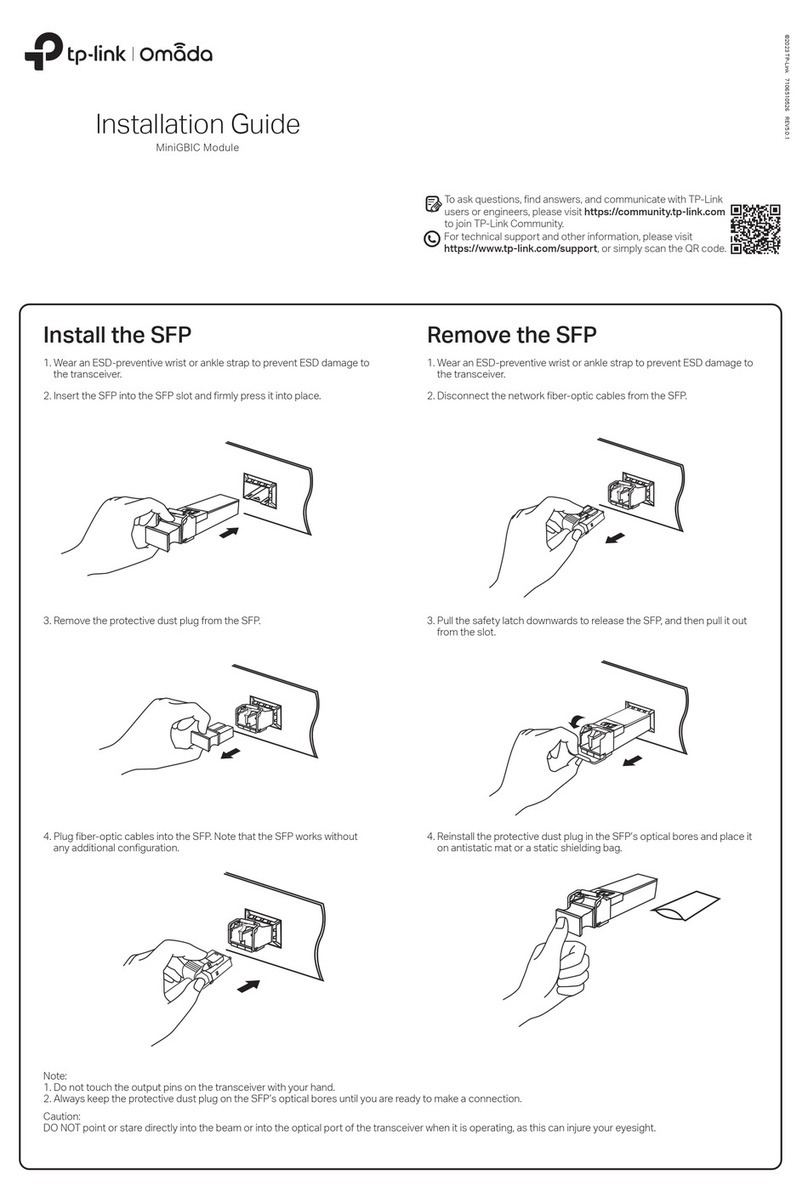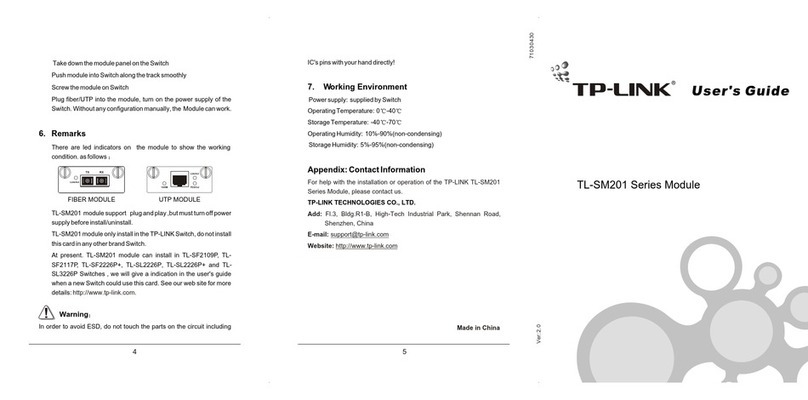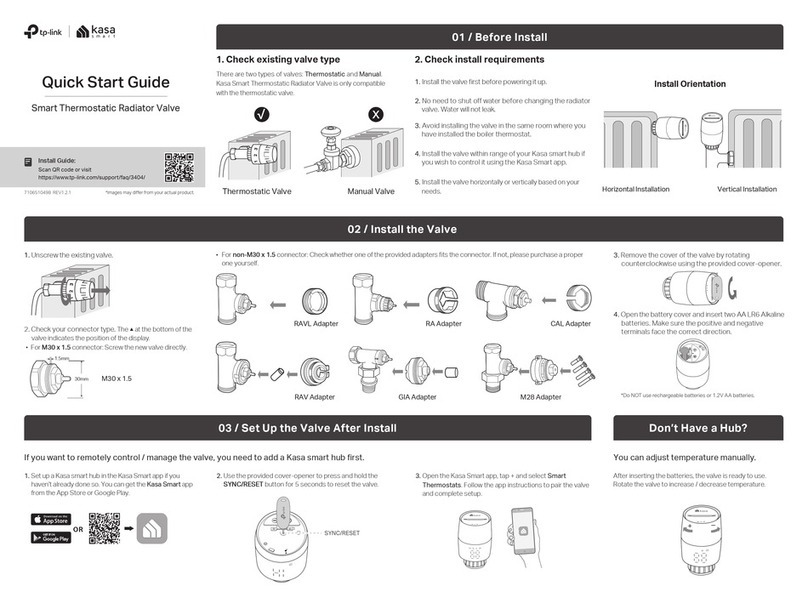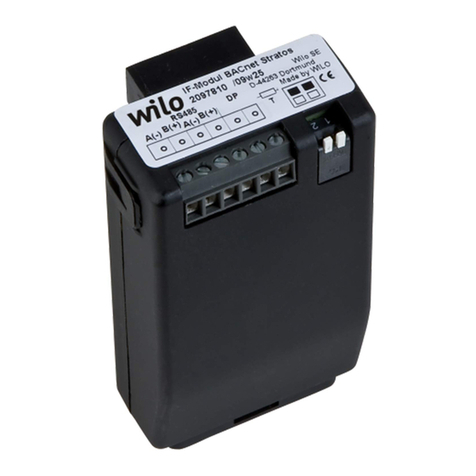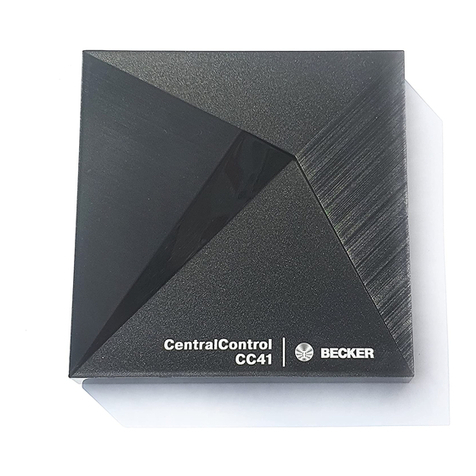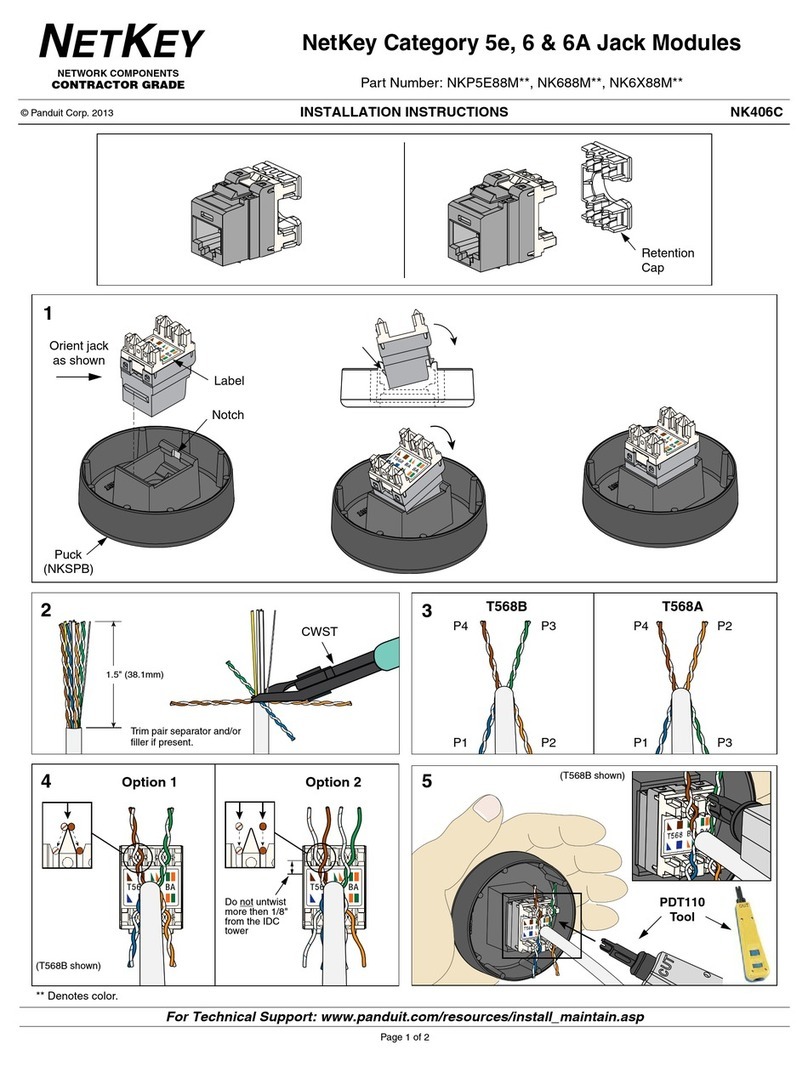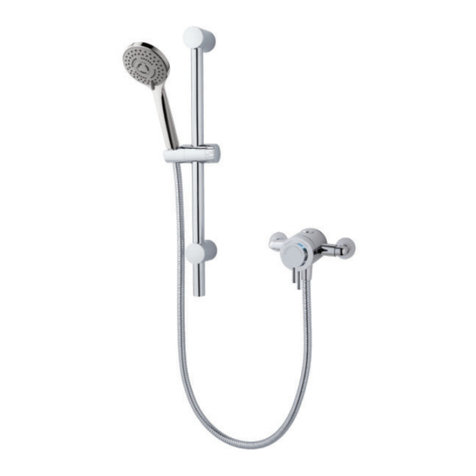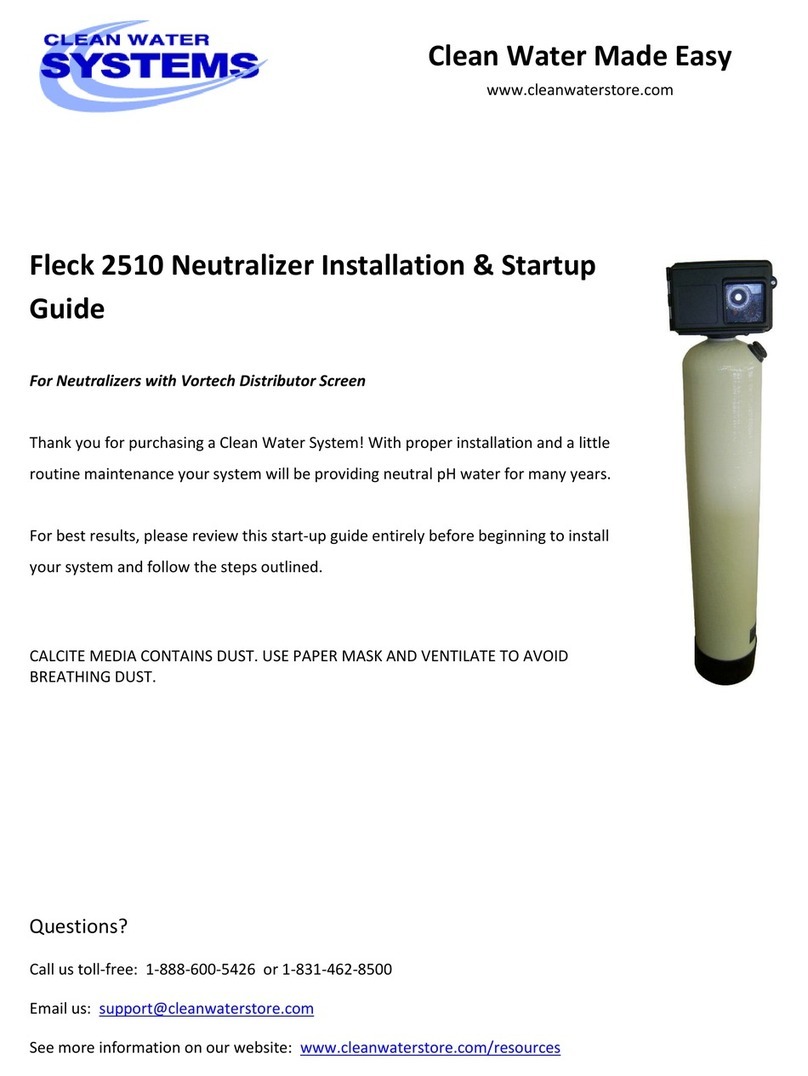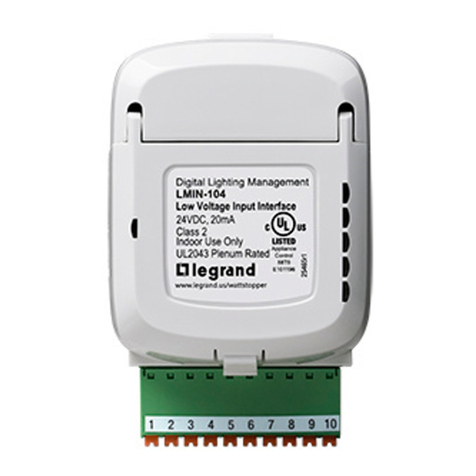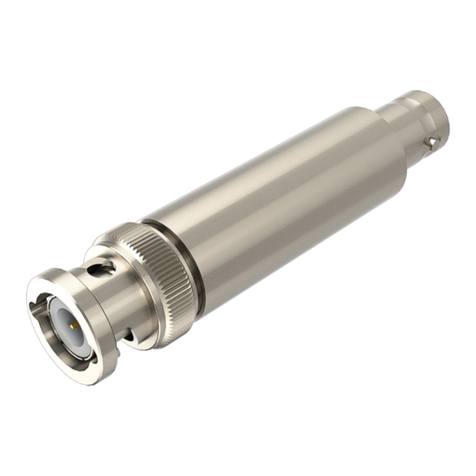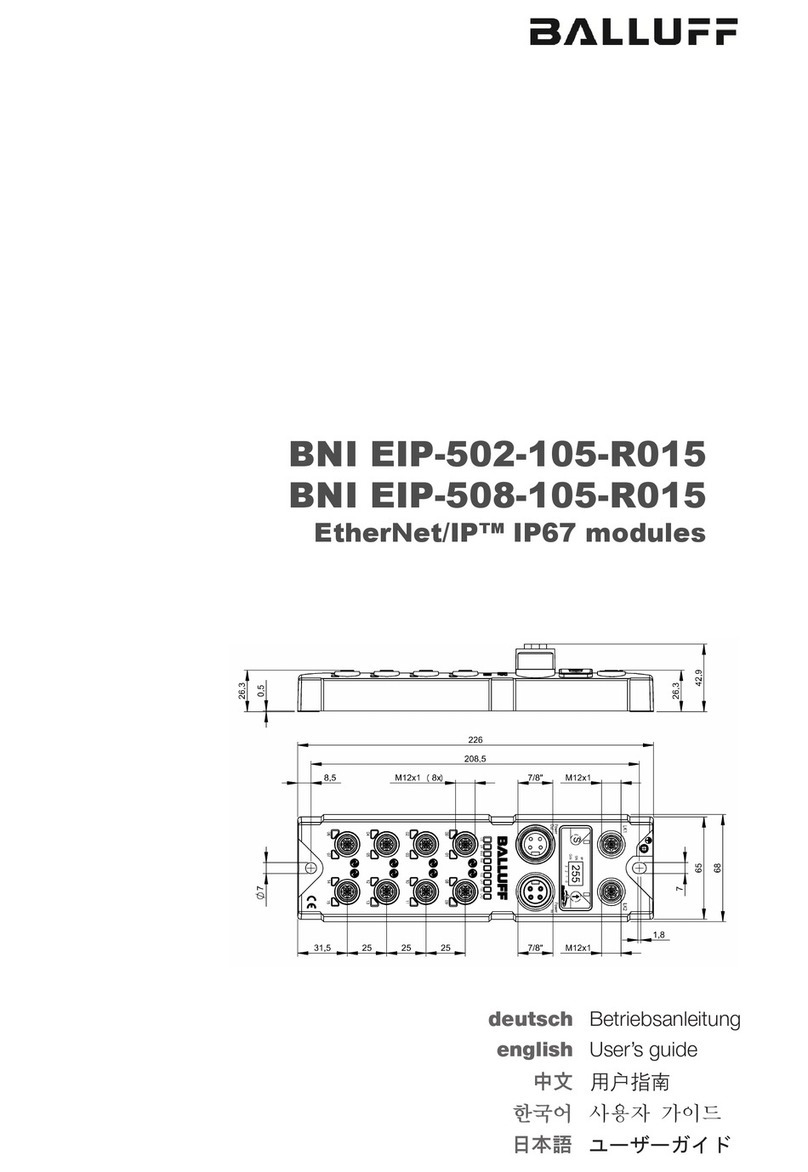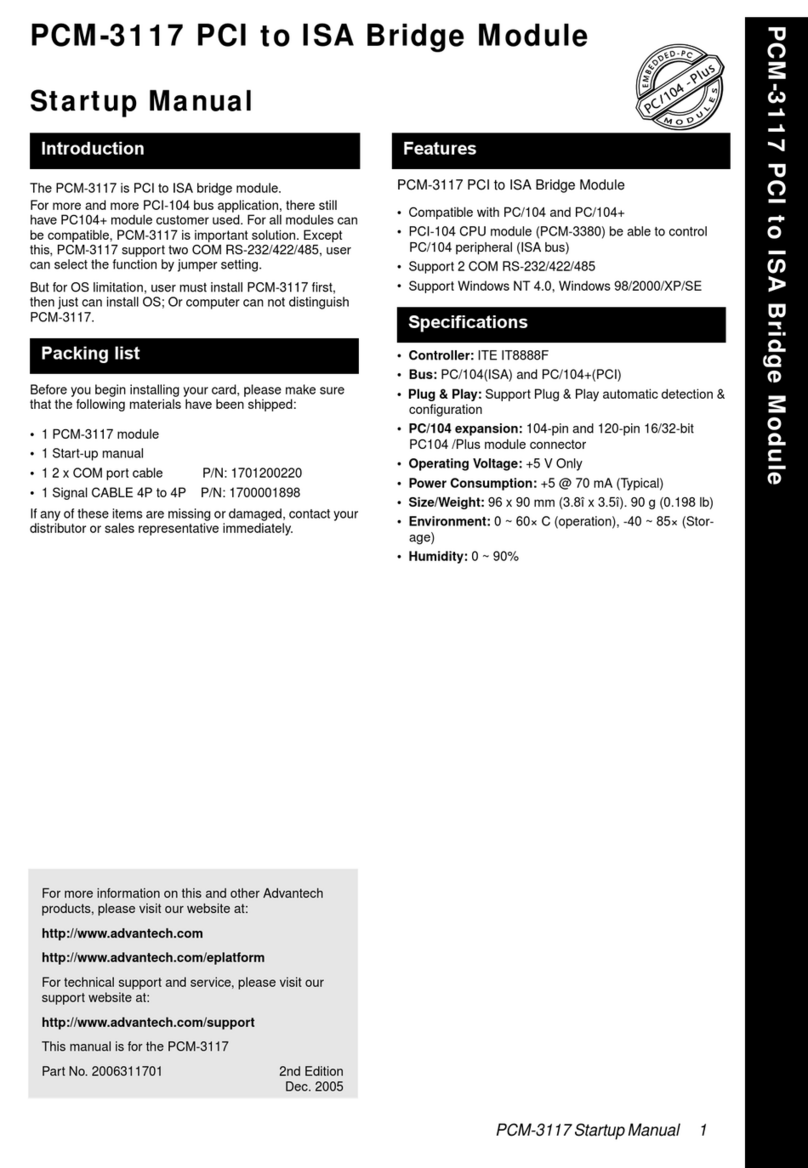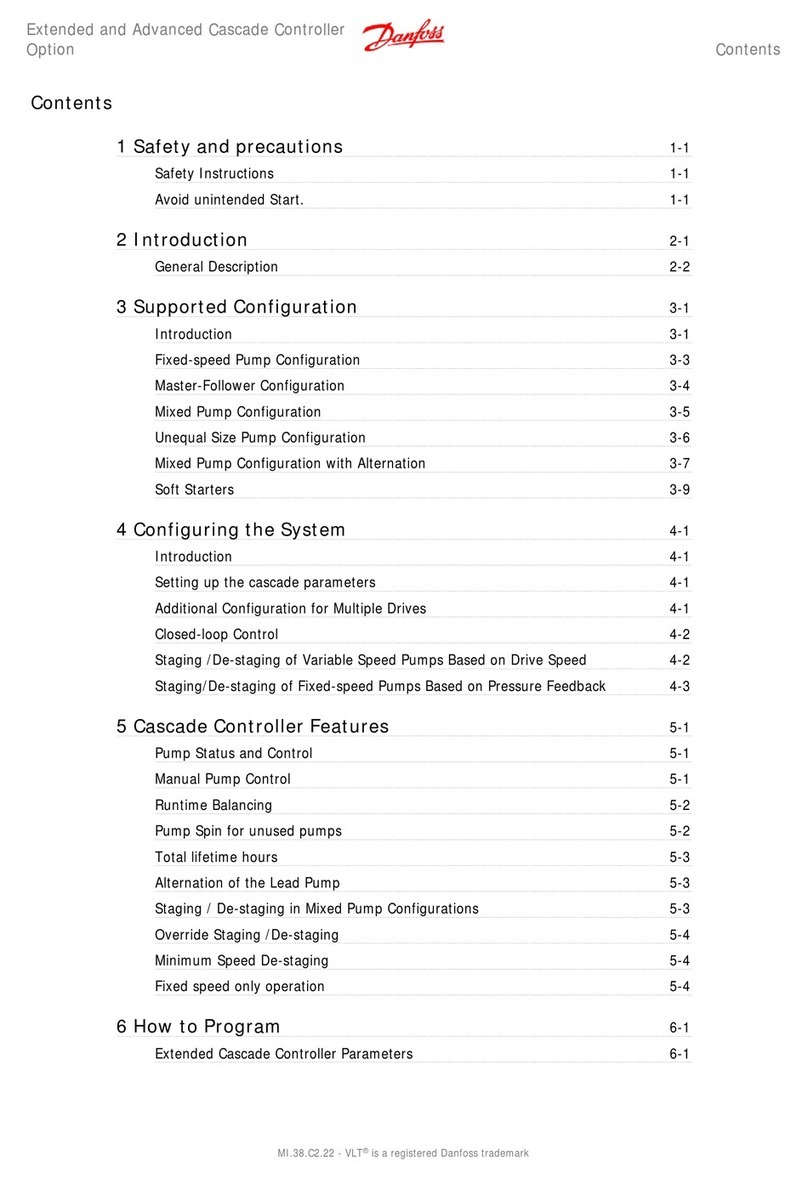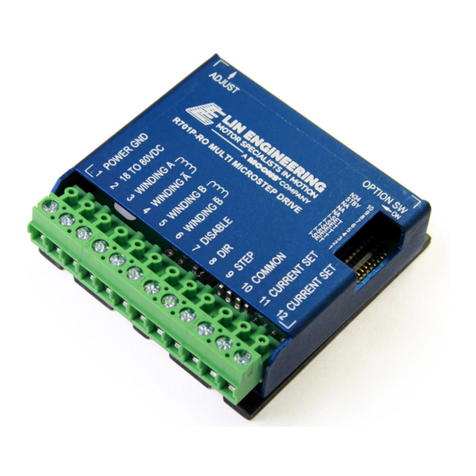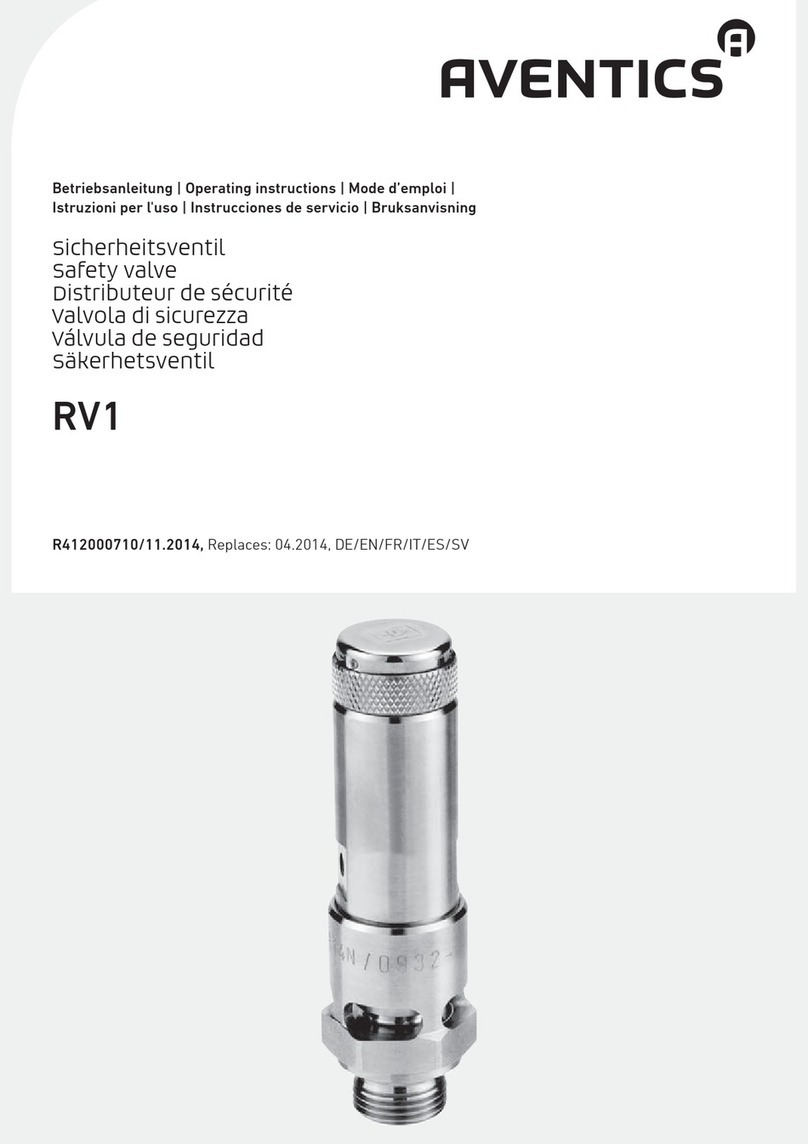
The 10G RJ45 SFP+ modules consume more power than optical modules. This may result in higher heat. To avoid overheating, it is recommended to place the
modules separated by multiple optical transceivers or empty slots. When used in high temperature environments, additional cooling must be applied.
Positioning the 10G RJ45 SFP+ Modules
Specications
Compatiblity
We recommend that you use only TP-Link modules on your TP-Link devices.
TL-SM331T:
https://www.tp-link.com/tl-sm331t/product-list/
TL-SM5310-T:
https://www.tp-link.com/tl-sm5310-t/product-list/
Note:
1. TL-SM331T does not support the data rate of 10 Mbps or 100 Mbps.TL-SM
5310-T does not support the data rate of 10 Mbps, but supports 100 Mbps /
1 Gbps / 2.5 Gbps / 5 Gbps / 10 Gbps.
2. When a Gigabit RJ45 SFP module is inserted into a 10 Gbps SFP+ slot, extra
3. When the 10G RJ45 SFP+ module is inserted into a 10 Gbps SFP+ slot and
the maximum rate of the peer connection port is 5 Gbps, 2.5 Gbps, 1 Gbps,
manually enabled.
To check the compatible TP-Link devices of your module, please visit our
website:
Product Operating Temperature
Storage Temperature
Storage Humidity 5% to 90% RH, Non-condensing
Operating Humidity 10% to 90% RH, Non-condensing
Environmental and Physical Specications
Safety Information
Do not touch the device while it is operating.
To prevent potential risks caused by heat, do not place your network device on
non-heat-resistant paper, cloth, fabrics, plastics, or any other surface that
doesn't provide space beneath your device for heat dissipation.
temperature should be lowered to keep the temperature of the modules within
the recommended range.
Do not attempt to disassemble, repair, or modify the device. If you need
service, please contact us.
TP-Link hereby declares that the device is in compliance with the essential
requirements and other relevant provisions of directives 2014/30/EU,
The original EU declaration of conformity may be found at
https://www.tp-link.com/en/support/ce.
EU Declaration of Conformity
UK Declaration of Conformity
Scenario 1:
Not RecommendedRecommended
Scenario 2:
Recommended Not Recommended
General Specications
RX_LOS
MAC Interface
2.5 W
/
/
Ye s
Standards and Protocols
Normal
Data Rate
TX_Fault
TX_Disable
Ye s
/
Hot Swappable
LLF
/
LFP
1000BASE-X
1.25 Gbps
TL-SM331T
1000BASE-T: UTP
cat.5e or above
TL-SM5310-T
XFI
10.3125 Gbps
100BASE-TX: UTP cat.5
1000BASE-T/2.5GBASE-T/
5GBASE-T: UTP cat.5e or
10GBASE-T: UTP cat.6a or
Cable Distance
/
DDM
/
/
Ye s
Ye s
/
/
Yes
Normal
Supported
TL-SM331T TL-SM5310-T
Supported
/
Supported
TP-Link hereby declares that the device is in compliance with the essential
requirements and other relevant provisions of the Electromagnetic Compatibility
The original UK Declaration of Conformity may be found at
https://www.tp-link.com/support/ukca
power margin.
